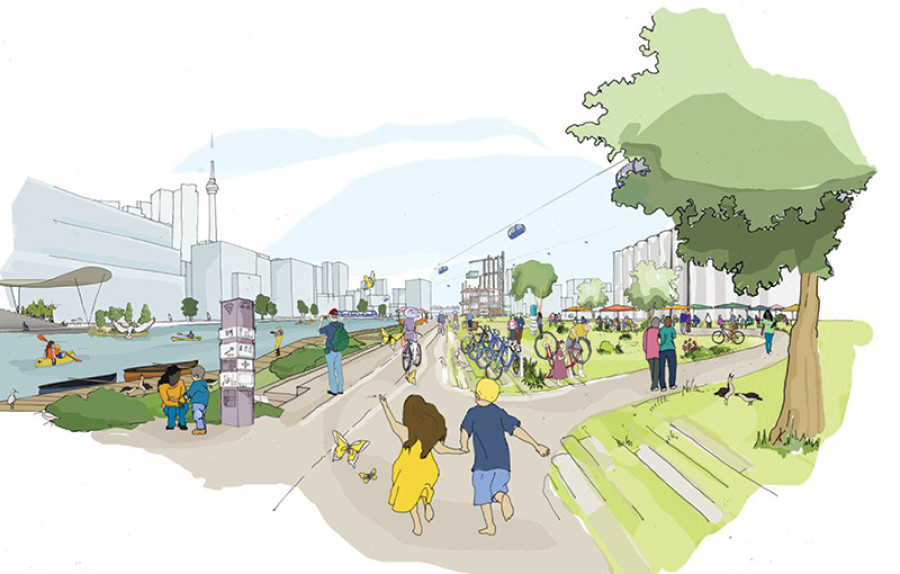Opinion
Understanding urban safety
The way cities are designed can prevent or expand violence against women and men
Barsha Chitrakar
With news about child abuse and violence against women coming from all parts of the country, being fearful of predators lurking about and extra cautious is only normal, and helpful at times. A lot of discourse has been occurring lately to explain the whys and hows of abuse against girls and women. This discourse has revolved around issues such as a paternalistic outlook that seems to be so intrinsic to our society and sense of entitlement over a woman’s body and rights that it germinates the seeds of violence. I have tried to examine if the way cities are designed can prevent or enhance violence against women and men—how the cities where we live and work influence urban safety.
According to a study done by UN-Habitat in 2015, while one in five people in cities around the world has been a victim of violence and crime, one in three women is a victim of violence. Data released by the Small Arms Survey, a project of the Graduate Institute of International and Development Studies in Geneva, Switzerland which provides expertise on all aspects of small arms and armed violence, confirms that the urban homicide rate is generally higher than the national rate. This, however, doesn’t imply that large cities with populations of more than 1.2 million breed more violence. In some regions, the data indicates that the larger the settlement, the lower the homicide rate. Yet, this relationship between the size of the city and the homicide rate varies in other world regions.
The safety gender gap is prominent across all regions with a considerably higher number of men feeling safe walking alone at night. The data for 2016 shows that while about 18 percent of the globally recorded homicide victims were female, this proportion hovers around 20 percent in cities. This implies that the female proportion of homicides in urban settings is slightly higher. Furthermore, some studies have shown that cities with rapid urban growth are more prone to violence. This, again, doesn’t hold true for all cities in world regions.
Urban agglomeration
Cities, by definition, are agglomeration of people and services. This agglomeration of population is often seen as a major factor of urban violence. However, the Safe Cities Index 2017 that ranks 60 cities around the world covering digital security, health security, infrastructure security and personal security lists Tokyo as the safest city. With a population density of 62 persons per hectare, the Japanese capital fares relatively higher in digital and health security. Four Asian cities—Tokyo, Singapore, Osaka and Hong Kong—that made it to the top 10 positions have considerably higher population densities.
Although the sheer number of people can help concentrate perpetrators, studies have shown that urban violence concentrates in areas with high inequality and social exclusion. Not only is urban poverty increasing, there is a huge gap between the urban rich and poor. This rise in economic inequality compounded by inadequate service delivery hinders access to basic urban infrastructures. Lack of proper sanitation facilities has severely affected girls and women in particular, curtailing their rights to mobility and even education which, in turn, affects their ability to benefit from urban infrastructure services.
Similarly, lack of transportation facilities has affected access to job opportunities and dragged youth populations into extreme poverty. This curtails basic human rights and aggravates social exclusion, inciting violent crime and making disadvantaged groups more prone to violence. Thus, other risk factors that accompany urbanisation, rather than urban agglomeration, induce crime in cities. As recent studies have shown, it is poor urban planning, design and lackadaisical urban management that triggers urban violence.
Urban interventions
A few urban interventions, namely violence prevention through urban upgrading, have been successful in reducing crime in disadvantaged urban settings and informal settlements. The case of an informal settlement Khayelitsha in South Africa is worth mentioning here. The physical infrastructure of this informal settlement was upgraded through improvements in pedestrian corridors, lighting and community amenities. What resulted next was a sharp decrease in the crime rate in the settlement, and a growing sense of social cohesion among the residents. Integrating peripheral and deprived urban areas with primary cities through the introduction of an efficient transportation network of cable cars in Medellin, Colombia is another case that resulted in employment opportunities and significantly reduced urban violence.
Crime prevention through environmental design is another strategic intervention that advocates effective use of the built environment leading to a reduction of fear of crime and an improvement in liveability. Green open spaces can help in reducing incidences of violent behaviour while, at the same time, creating a space for public engagement. Similarly, well connected and legible streets with proper lighting ease mobility and encourage walking and social interaction thereby entrusting a sense of safety. This further provides an increased level of ‘eyes on the street’ (a term coined by urban activist Jane Jacobs) which fosters involuntary policing and surveillance of public spaces by the users themselves.
Although cities create risk factors that facilitate violence, they also offer a set of protective factors such as proper urban design measures, street lighting, adequate basic urban services and prevention programmes besides socio-economic policies focusing on unemployment and poverty that can reduce the impact of violence. Many cities, however, fall short of understanding urban safety better. Understanding and identifying these risk and protective factors can help cities develop coping strategies and interventions in liaison with local governments and communities. This will lead to cities that are safe for women, men and everyone as envisaged by Sustainable Development Goal (SDG) 11.
Chitrakar is an architect and urban planner currently engaged at Urban Planning and Development Center (UPDC) at Department of Urban Development and Building Construction (DUDBC).




 13.12°C Kathmandu
13.12°C Kathmandu










